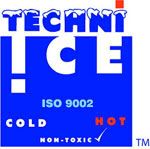
I like this article from
Exploratorium about ice.
Ice Stories: Dispatches from Polar Scientists is about penguin biologists, glaciologists, cosmologists, geologists, and marine scientists working in Antarctica and the Arctic. They’ve documented their adventures, so you can follow their research, ask questions, and share in their discoveries as they occur. Read on.....
For those who think ice is all the same: think again. At the poles, ice takes many forms—from shiny “grease ice” on the sea surface to mile-thick ice sheets that cover entire continents.
The many varieties of ice found at the poles arise from the various environments in which they form: on land, at sea, and at the boundary between the two.
On land, snow falls and hardly ever melts. Year after year, snowfall piles up and compacts into ice that flows like a slow-motion river—a glacier. When glaciers are bounded by mountains, they carve deep U-shaped valleys on their way to the sea, valleys that remain long after the glacier has melted away; Yosemite Valley in California is an example.
When glaciers stretch out across flat land or over an entire continent, they’re called ice sheets; both Greenland and Antarctica are almost entirely covered by ice sheets that are miles thick. Within ice sheets, faster-moving zones called ice streams occur over water or smooth ground. Smaller ice sheets that sit on mountaintops are called ice caps.
When ice from glaciers and ice sheets reaches the sea, it can spread across the water as a slab called an ice shelf. Ice shelves can extend for miles—even hundreds of miles—over the ocean. Chunks of ice can break off from an ice shelf, forming floating icebergs.
In Arctic climates, even land that seems ice-free may hide a layer of ice beneath its surface. Permafrost is a layer of soil that remains frozen year round.
Sea ice forms when temperatures dip so low that the ocean itself begins to freeze. Sea ice can be free-floating drift ice, or fast ice that is “stuck fast” to land. When sea ice first begins to form, it appears as fine bits of frazil ice, then thickens into soupy grease ice, and then sometimes forms pancake ice, pieces of drift ice that have been battered into rounds by waves and collisions. When pieces of drift ice get packed together, they become pack ice. An ice floe is a solid chunk of drift ice up to 6 miles (9.7 km) across; if it grows larger than this, it’s called an ice field.
More stunning photographs below via
Exploratorium.











